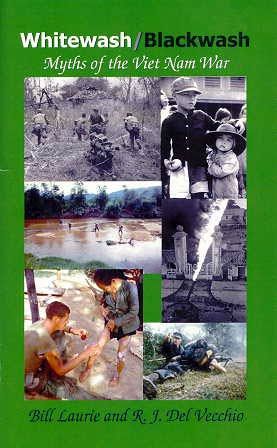 by R. J. Del Vecchio
by R. J. Del Vecchio
This combat veteran served with a Marine unit in I Corps, nearest to the DMZ, during the Vietnam War. Co-author of “Whitewash/Blackwash: Myths of the Viet Nam War,” he has shared his thoughts on Episode 6 of Ken Burns’ PBS Vietnam film series with friends in the Black Hills:
First and foremost, we get the full special on General Loan blowing away the captured VC. We get to see the picture more than once, and hear the horror in the voice of the American newsman who witnessed it. And we hear about the awful impact of that photograph on so many.
We hear not one single word about the man executed. Not murdered, executed, as is permitted by the rules of war when an agent not in uniform commits a war crime. The man had led the VC murder squad that had slaughtered an ARVN officer, his wife, and all his children, down to the toddler. In the midst of a huge battle, a summary execution was a reasonable and legal thing to do. But why would Burns bother with any of that?
Secondly, the infamous “we had to destroy the town in order to save it” statement, which was never said by the US officer, that was some kind of paraphrase coined by a reporter. But sure, let’s throw that in.
And a minor detail…. there were not just Marines at Khe Sanh, one part of the line was held by ARVN Rangers, who chopped to pieces the NVA who attacked them. Then there’s the NVA officer who says they’d moved all their men away from Khe Sanh. Really? So the Hill Fights that went on for days and days with Marines mowing down attacking NVA didn’t happen? The two divisions of NVA that got decimated by our artillery and air strikes weren’t really there? But hey, we can believe anything one of the guys from the noble people on the other side says.
Then we get to Hue, finally. And the first thing we hear is that 6000 civilians died during the fighting, which of course must all be our fault since we’re the guys who destroyed the city. I guess there was no time to mention the civilians who died from the rockets and mortars of the NVA in the first days when there was no air or artillery from US forces, or for the civilians shot in the streets by the VC murder squads as part of “punishing the traitors”. The RVN authorities, when it was over, totaled up over 5000 people executed by the communists, including whole families (as in the Saigon incident), French priests, and German doctors. But no total of civilians killed as collateral damage anything even close to 6000.
We do get to hear about the deep guilt (well deserved) of one Marine for taking part in a gang bang (not a rape) paid for with food. Not a proud moment, but somehow not really comparable to the massacre of thousands of people by the communists. Yet somehow important enough to be covered, after all, it helps show what rotten people we really are.
Only later, after being impressed with how destroyed the city was (and it was one hell of a mess, I was there briefly after most of the fighting was over), does the topic of the massacres come up. And to give credit due, they do have two communists admitting that it happened. (One of them says, be careful with this film or I’ll be in trouble, and he was right about that.) But we hear the total was 2800 people, which is the lowest estimate made, dating back to a time shortly after the battle was over and the first bodies were being dug up. The later total of bodies found and people known to have been taken away runs up to 5000+. But why bother with that more accurate figure?
The one moment in this that struck me really well was when the man talking about how when he and a whole bunch of other Americans were hanging together, lots of different people, it struck them so strongly that “WE WERE AMERICANS”, a moment that I remember vividly in my own experience there one day. It’s a feeling of commonality and unity that is priceless, and sadly today has become so rare.


